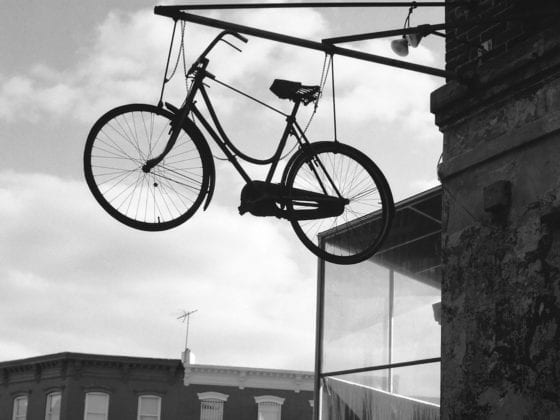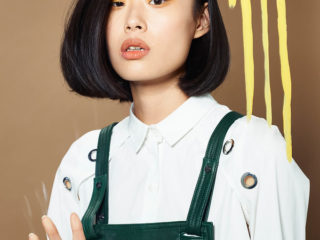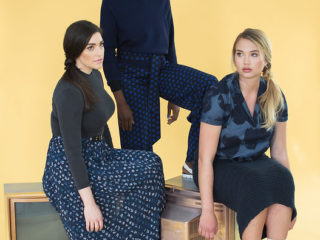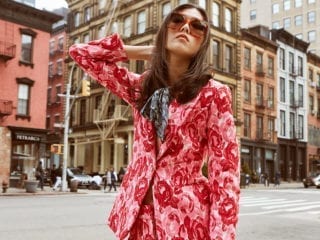The man and machine: There’s a tug-of-war between metal and flesh in many industries, including the fashion industry. Rather than rope, the entities have fought over needle and thread: what it takes to make a garment or advertise it. In our modern world, the human and the technical have gradually accepted each other’s presence, recognizing that instead of working against one another, the two are able to expand fashion horizons in the industry side-by-side.
The era of innovation that began with the invention of sewing machine in the 1900s — thank you, Industrial Revolution — has since evolved into robotic wonders quite grander. In fact, the digital age has added to the progression of the Industrial Revolution by providing new platforms for promoting mass-produced products.
We chatted with Rachel Arthur, an award-winning fashion journalist and founder of Fashion & Mash, who has written on the intersection of business, fashion and tech for the The New York Times, Business of Fashion and Forbes. She gave us some insight on ways technology — for better or worse — has been and will continue to mold fashion these next few years:
Darling Magazine: What are some of the ways fashion and tech have shaped each other in the last few years? What are some future projects you know of?
Rachel Arthur: Fashion and technology are increasingly intertwined. We’ve seen everything from connected clothing shaping design to artificial intelligence impacting the way that consumers shop. What it’s resulting in is a smarter industry, ever tailored to the customer on a level of one-to-one.
As the technology improves across the board, we’re only going to see more of this. What was once hype, is becoming integrated into business. 3D printing is now standard fare for brands like adidas and Nike in their footwear for instance, while augmented reality is beginning to play a big role in the way that shoppers discover and interact with fashion.

DM: In your experience, has fashion shaped tech or has tech shaped fashion?
RM: Arguably both, but the latter seems increasingly evident. Fashion has always been built on innovation – from trading textiles in ancient times all the way through to the advent of lycra, for instance. But what we’re seeing nowadays is that technology is fundamental to the very shape of the business and its future growth potential.
DM: Runway collections are now immediately sold online and we can shop blogger looks instantly via social media. What are your thoughts on this “see-now, buy-now” mentality?
RM: This is an evolving space, and I don’t think we have it figured out yet. The answer really is that there’s no one size fits all rule. For some designers, going direct to consumer in-season is absolutely going to be the right move, for others there need to be a heavier reliance on the more traditional wholesale model. What is starting to prove interesting is the middle ground in there. I don’t think we need to shift entirely to see-now, buy-now, but I do think we need to evolve the operational model in order to take better advantage of marketing dollars spent.
DM: Blogs like Man Repeller have recently made a case for slow fashion. Eric Wilson, Fashion News Director of InStyle also said to TIME, “one of the dangers of high tech fashion is that it begins to lose its soul.” Do you think tech is compromising the artistry of garment-making?
RM: You are always going to find voices for both sides of this argument – especially given the fact it’s a very deep and nuanced one. From my perspective, if we look purely at creativity and artistry, there is enormous potential to integrate technology in order to only improve upon the jobs we currently do.
Computational creativity – or the use of data insights and AI in design – is a fascinating space and one I expect to see radically increase for the foreseeable. This is the idea that machines can help us with the creative process, but it doesn’t need to take away the human ability, just ensure that what is produced is more commercially viable. It can help with things like which colours or patterns are more likely to sell for instance, thus reducing the instinct part of forecasting. At the end of the day, artistry is fundamentally irrelevant if you don’t also have collections that sell.
From my perspective, if we look purely at creativity and artistry, there is enormous potential to integrate technology in order to only improve upon the jobs we currently do.
DM: What about from a business standpoint? Is tech a good thing for the business of fashion economically, politically and socially?
RM: Undoubtedly. If we look at the numbers, the luxury fashion industry has been enjoying growth largely thanks to expansion in Asia (China) over the past years. Today, that’s slowing, leaving the engine for growth solely in the hands of digital. E-commerce is still labeled as technology for such businesses, making it a mandatory consideration for future commercial success.
What are your thoughts on technology and fashion? Let us know in the comments below!
Images via Katie Kopan











1 comment
It’s been so interesting lately to see the work done by technology advances such as 3D printing. I used to use it in architecture school during my degree, and I never thought it would be so commonly adapted to an industry like fashion. I’ll be sure to keep my eye on what develops between technology and fashion in the near future!
–
Charmaine Ng | Architecture & Lifestyle Blog
http://charmainenyw.com